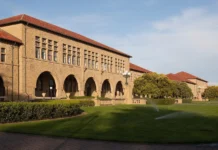Israeli and Western eyes see Iran as synonymous with an Islamic republic that hates Israel, supports terrorism, and is constantly plotting to destroy the Jewish state and overthrow the Sunni regimes in the Middle East. But as it is in many cases, reality is far more complex.
The priorities of many of Iran’s 80 million citizens have nothing to do with spreading Iranian influence worldwide or the future of the Middle East. They are busy with their own existence, and this Monday, for example, many of them were in their homes or in cafes or stadiums, rooting for their national soccer team as it came sensationally close to going through to the final 16 in the World Cup in Russia, only to end its match against Portugal with a draw.
The merchant class in Iran, especially those who sell their wares in the Grand Bazaar in the capital, enjoy a special economic and social status. Their massive support of the 1979 Iranian Revolution has labeled them a class affiliated with the regime, and despite the many modern shopping centers one can find in Iran, it is these merchants—the bazaaris—who serve as the barometer for the true state of the Iranian economy.
These days, many of them store goods whose precise value is unclear due to an extreme devaluation in the Iranian rial, which this week plunged to 90,000 to the U.S. dollar in the black market, despite government attempts to control the exchange rate. The fact that so many merchants cooperated with the demonstrators and called a general strike attests as to the gravity of their plight.
Still, the history of popular protest in Iran shows that this wave, too, is expected to fail, as it has no hope of toppling the regime in Tehran in the foreseeable future. Recent events are part of Iran’s protest culture, which has developed since 1979. The civil struggle against the ayatollahs has a recurring dynamic: a formative event that leads to peaceful demonstrations, which then turn violent and are crushed by the ruthless Islamic Revolutionary Guard Corps.
At this point, it is not unclear who sparked the current wave of protest, but the dissidence against the Iranian establishment is led by the reformist camp, which has millions of supporters. As suggested by its name, the reformists want to see wide-scale reforms in the Islamic republic; they want to eradicate corruption and see their economy grow and prosper. Some of them would also like their country to be more democratic and maintaining robust ties with the international community.
But even if the reformists represent the majority of the Iranian people, they have no clear leader, no centers of power and no military arm to speak of. Moreover, this public is diverse and united only in its opposition to the regime.
Over the years, Iranian reformists have pinned their hopes on various leaders. Between 1997 and 2005, it was President Mohammad Khatami, but the Iranian president has no real authority, especially on issues of foreign affairs and defense. These issues are under the exclusive control of Supreme Leader Ayatollah Ali Khamenei, whose policies are executed by the Revolutionary Guards. These powers allow the Revolutionary Guards to wield significant power, including controlling key sectors of the Iranian economy.
Mahmoud Ahmadinejad, elected president in 2005, was a conservative figure. Seeking re-election in June 2009, he was challenged by Mir Hossein Mousavi, who together with cleric Mehdi Karroubi became leaders of the reformist camp. After Ahmadinejad won, millions of Iranians took to the streets demanding a recount of the votes and saying Ahmadinejad had committed election fraud.
This came to be known as the Iranian Green Movement, whose slogan was “Where’s my vote?” The demonstrations that began in Tehran quickly swelled into nationwide unrest, as protesters used social media to spread their message.
The Revolutionary Guards soon came to their senses and set out to quash the protests. They blocked all access to social media in Iran and spurred the Basij militia, the IRGC’s brutal reserve force, on the protesters. The leaders of the demonstrations, as well as hundreds of others, were arrested and tried. Low-intensity protests continued until early 2010 and resurfaced during the 2011 Arab Spring, but those were quelled almost immediately, and Mousavi and his wife were placed under house arrest for years.
‘It’s the economy, stupid!’
Iran’s prolonged economic stagnation, brought about by crippling sanctions imposed by the West over the country’s refusal to negotiate over its nuclear program, changed the nature of public protest in Iran from political to socio-economic. The Iranian public has also grown more sophisticated. From 2 million smartphones in 2014, Iranians now own 48 million mobile devices with internet access, making the smartphone the reformist camp’s main weapon.
In June 2013, reformist Hassan Rouhani won the Iranian presidential elections and pledged to end the international sanctions imposed on his country. For the conservative establishment, the election of a reformist leader as a president devoid of any real powers created the illusion of an electoral alternative, facilitating an effective mechanism by which to control the people.
Khamenei authorized Rouhani to negotiate with world powers and in July 2015, the landmark nuclear deal was inked. Khamenei and his supporters expressed reservations about the negotiations and the agreement from day one, but it was ratified by the Iranian parliament.
The regime had high hopes that sanctions relief would lead to economic growth that would mollify the protests, but after a short period during which it appeared as if the economy was on the mend, it stagnated again. U.S. President Donald Trump’s May 8 decision to exit the nuclear deal prompted foreign investors to bolt, and the brittle Iranian economy was left reeling.
The wave of protests that flooded Iran this week was a direct extension of the large-scale demonstrations that erupted on Dec. 28, 2017—well before the Americans pulled out of the nuclear deal. The demonstrations, protesting the regime’s economic policies, quickly spread to 75 cities across Iran, as hundreds of thousands of frustrated Iranians rallied against the ayatollahs.
The economic stagnation prompted many Iranians to seek out dubious investment channels. Many put their faith—and hard-earned money—in ventures that turned out to be pyramid schemes and, frustrated by losing their savings, some turned to discussion forums on the Telegram messaging application, where they could vent their anger.
All that was missing was a spark to ignite social rage and that came from an unexpected direction. As far as anyone can tell at this time, the current wave of protests began in the city of Mashhad, some 740 kilometers (460 miles) east of Tehran, where supporters of the conservative establishment organized anti-Rouhani protests. Those quickly got out of control, sweeping many major cities in Iran and focusing on the supreme leader and his ilk.
These demonstrations included unprecedented expressions of dissent. Protesters chanted “We don’t want the ayatollahs,” “Death to the dictator” and “Death to Khamenei,” as well as “Death to Palestine,” “No to Gaza, no to Lebanon” and “Leave Syria and think of us,” indicating widespread anger at the Iranian regime for spending billions of dollars on proxy wars in the Middle East and supporting terrorist groups such as Hezbollah in Lebanon and the Houthis in Yemen, instead of investing in the struggling economy at home.
True to form, the Revolutionary Guards sprung into action to suppress the protests, blocking social media and arresting many; the exact number is unknown. Hundreds of subsequent strikes and labor disputes ensued—by teachers, steel workers, hospital staffs, railway workers and bus drivers—but they generated little international interest compared to Sunday and Monday’s mass demonstrations.
Domestic unrest in Iran may outlive the global media’s attention, but it will simmer on until things come to a head once again.
























